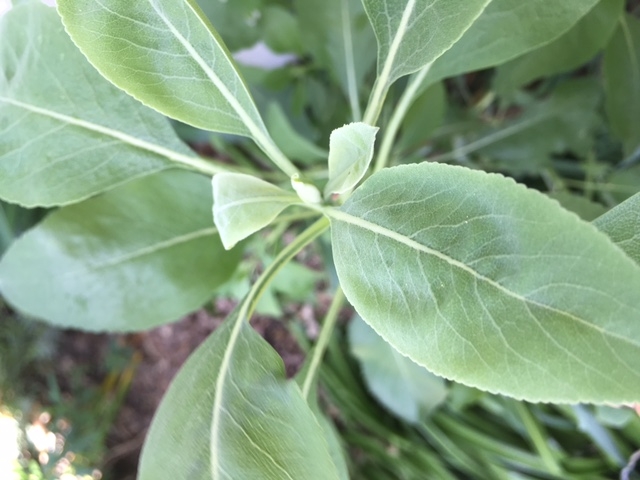White Sage
By Jutta Thoerner UCCE Master Gardener
Salvia Apiana
White Sage
Planting zone: 7-10
Size: 3 to 4 feet tall, 3 to 6 feet wide. Flower stems can spike to 9 feet or more.
Bloom:Light blue to white flowers in April to mid-July. The flower is a colorful corolla with 2 lips of unequal length.
Exposure:Full sun, tolerates some shade.
Pruning needs: Prune to shape and occasionally remove older stems toencourage new growth.
Water needs: Low water once established.
Snapshot: Original habitat for White Sage is our coastal sage scrub, inland chaparrals and elevations of pine forests below 4000 feet. This Sage is well adapted to droughts and fire. Plants older than one year will come back after brush fires due to their deep roots. Flowers are pollinated by bees and wasps who have to push their way deep into the flower to access the nectar. One of the best tasting honey is harvested from White Sage. The plant has been used medicinally as an astringent and for its antibacterial and anti-inflammatory properties. White Sage has been used for many years in spiritual ceremonies by indigenous cultures and the seeds are an ingredient in pinole, a type of flour. The leaves and stems can be consumed or used to brew teas. Give White Sage room to spread out in your garden and you will enjoy the fragrance released by the leaves every time you brush against it.
Bottom of Form
